The Incredibly Addictive World of Dangerous Dave
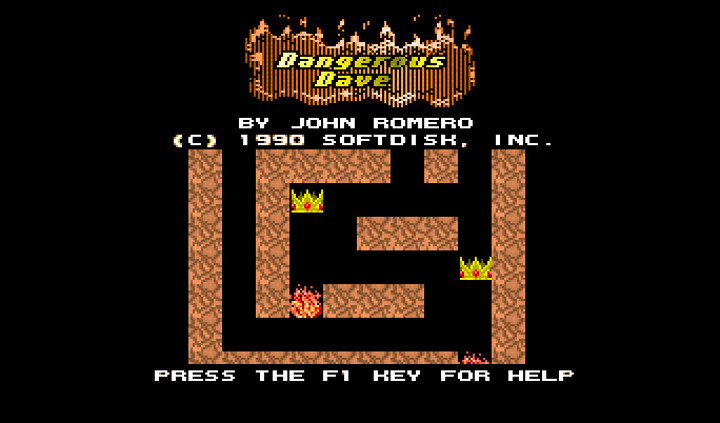
It is a strange quirk of human nature that when you have plenty of everything, it is often difficult to make the right choice. However, when you have limited resources, you’re forced to choose from what’s available to you — oftentimes the correct choice is one of three options rather than one of millions.
Excuse me. Perhaps I’m sounding a bit too philosophical. Don’t worry, I’m about to talk about a video game called Dangerous Dave.
So let’s start over.
Today, in an era of big-budget video game studios, it’s not uncommon to play a game that was made by teams of 200 people. We’ve seen massive open worlds, video games the size of an entire universe, and stunning visual fidelity, which only keeps getting better. However, back in the 1980s, games were being made by small teams or oftentimes by a single person. No, that’s not an exaggeration; in the case of Dangerous Dave, the entire game really was the work of one person.
That person is John Romero. If that name sounds familiar, it’s probably because he later would co-found id Software (this was a joint venture between Romero, John Carmack, Adrian Carmack, and Tom Hall). id Software was behind some of the most recognizable (and most influential) first-person shooters of the 1990s, including Wolfenstein, Doom, and Quake.
But before those FPS titans would rise, before id Software was formed, and before the decade flipped from the 1980s to the 1990s, Romero released Dangerous Dave in the Deserted Pirate’s Hideout! for Apple II and MS-DOS.
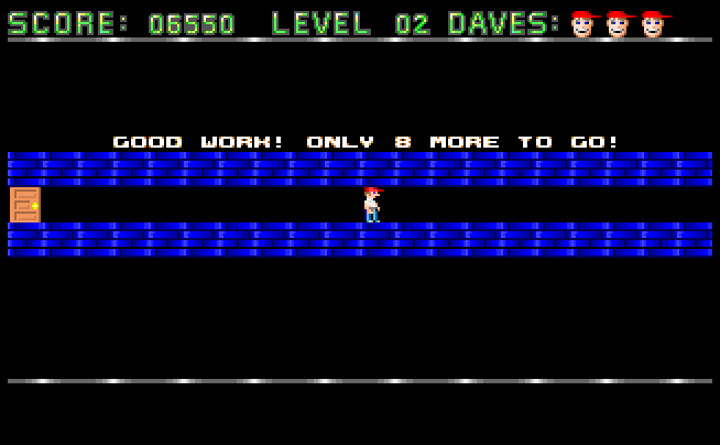
The game was published by Softdisk, Inc., in 1988 (and ported to PC disk in 1990 with the title shortened to just Dangerous Dave), but it was 1993 before I finally played it.
In 1993, I had access to an Intel 80386 (usually just referred to as a 386). That computer was a treasure, a box of metaphorical candies in the form of classic video games. That 836 introduced me to Prince of Persia’s world of wonder and fairytale magic, and it also had Paratrooper (1982) and Arkanoid: Revenge of Doh (which hit arcades in 1987, but it was ported to MS-DOS in 1988). And then, of course, there was Dangerous Dave, with simple graphics and gameplay that hooked me from the start.
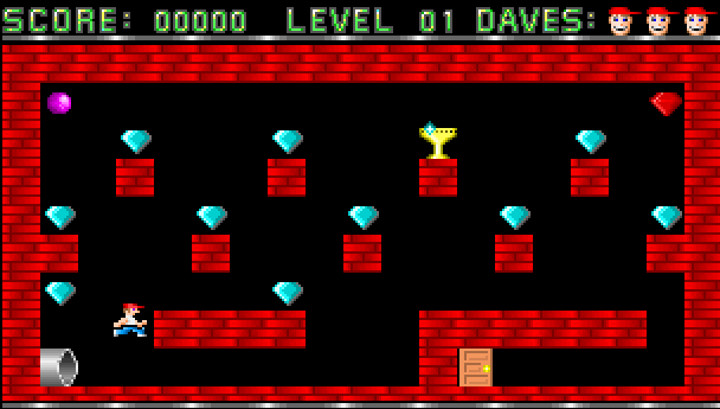
The first time I loaded up Dangerous Dave, I was introduced to a pixelated boy wearing a red hat — not unlike Mario, I suppose (in fact, Romero admits to being hugely inspired by Super Mario Bros.). Behind the boy was a pipe, suggesting that he had just crawled out of it, and in front of him was a world of bricks and gems. On the opposite side of the screen was a little alcove that contained a door.
It was immediately obvious what I was supposed to do: collect the gems and reach the door. “This will be easy,” I said to myself. I was wrong. Sure, that first stage was completely safe, allowing me to collect all of the gems, and even the trophy (which unlocks the door), without a scratch. But the first stage is just there to ease you into the game’s basic mechanics.
The next stage introduces pits of fire and water, and both can kill the red-hat-wearing boy if he so much as touches them. There are even gems underneath a platform to lure the boy to a watery death. On top of the more dangerous layout, there’s no door in sight. The player needs to move to the right for multiple screens before the next doorway comes into view.
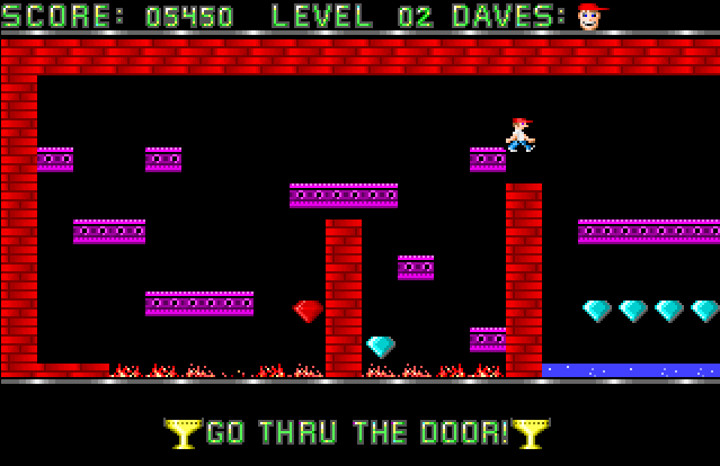
The next stage ups the danger even more, with spiders that shoot beams of what looks like fire but I assume it’s some sort of web substance. The player is also given a gun to deal with the spiders, but this is a trick that requires skill and precision timing. Later on there’s a jetpack as well, but this also takes practice to master.
I died a lot in the beginning, but every time I hit the Game Over screen, I knew my next attempt would take me just a little bit further until I had finally completed the game. “This time I will make it,” I would tell myself.
There’s also a scoreboard, which keeps you coming back even after you’ve beaten the game to see if you can top your previous high score, perhaps you’ll get some of the gems you’d been missing. True mastery of the game puts your initials at the very top of the leaderboard.
John Romero didn’t create Dangerous Dave expecting it to become a franchise, but the game spawned several sequels nonetheless. In 1991, Romero and company had formed id Software, but they were still making games for Gamer’s Edge, Softdisk’s bi-monthly games subscription service. They decided to release a sequel to Dangerous Dave, which had become quite popular by that point. While the original game was the product of Romero alone, development of the sequel, Dangerous Dave in the Haunted Mansion, was supported by a small team (as evidenced by the game’s credits screen).
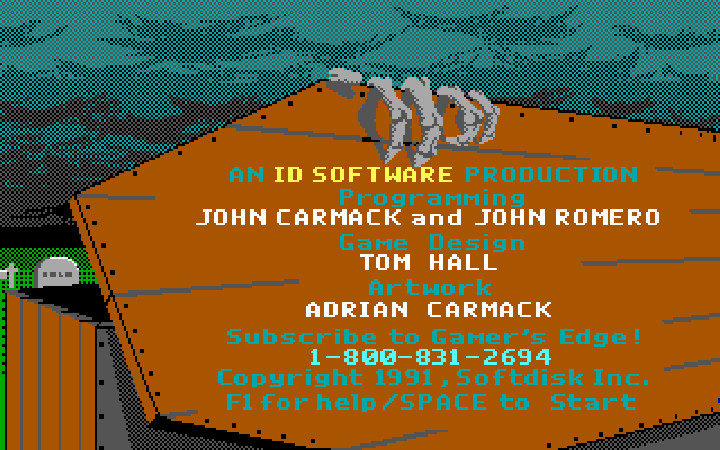
At the end of 1991, id Software’s contract with Softdisk expired, and the two companies went their separate ways. Softdisk, however, continued to use the Dave character without Romero’s (or anyone at id’s) creative input. Softdisk put out two more sequels, Dangerous Dave’s Risky Rescue and Dave Goes Nutz!
I still look back on the original game with nostalgia in my heart. With just one person working under the constraints of 1980s hardware, a character was created that would connect with a huge audience. While the series is overlooked today (far too often, in my opinion), Dave has become one of those characters who, like the Prince in Prince of Persia, I feel connected to.
In many ways, this happened as a result of the technical limitations, not despite them. If Dave had been a fully fleshed-out character, rendered in three dimensions with photorealism, it’s unlikely he would have captured my imagination (there’s actually a name for this phenomenon; it’s called “amplification through simplification.”) And I guess this was what I was trying to get at in the very beginning, when I started waxing philosophical. But I just can’t help it. There’s just something about Dangerous Dave that gets my imagination working.
